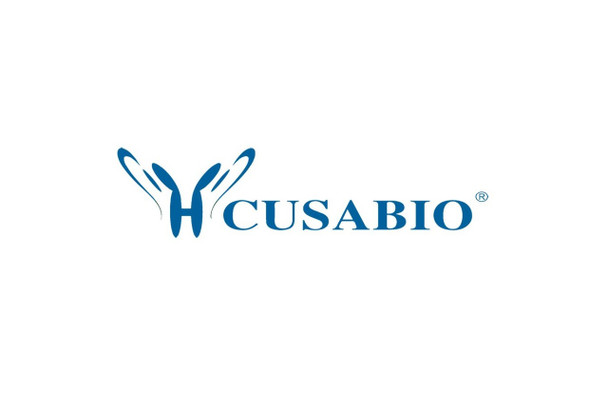Cusabio Mouse Recombinants
Recombinant Mouse Prominin-1 (Prom1), Partial | CSB-EP018751MO
- SKU:
- CSB-EP018751MO
- Availability:
- 13 - 23 Working Days
Description
Recombinant Mouse Prominin-1 (Prom1), Partial | CSB-EP018751MO | Cusabio
Alternative Name(s): Antigen AC133 homolog Prominin-like protein 1 CD_antigen: CD133
Gene Names: Prom1
Research Areas: Others
Organism: Mus musculus (Mouse)
AA Sequence: GANVEKLLCEPYENKKLLQVLDTPYLLKEQWQFYLSGMLFNNPDINMTFEQVYRDCKRGRGIYAAFQLENVVNVSDHFNIDQISENINTELENLNVNIDSIELLDNTGRKSLEDFAHSGIDTIDYSTYLKETEKSPTEVNLLTFASTLEAKANQLPEGKPKQAFLLDVQNIRAIHQHLLPPVQQSLNTLRQSVWTLQQTSNKLPEKVKKILASLDSVQHFLTNNVSLIVIGETKKFGKTILGYFEHYLHWVFYAITEKMTSCKPMATAMDSAVNGILCGYVADPLN
Source: E.coli
Tag Info: N-terminal 6XHis-SUMO-tagged
Expression Region: 509-794aa
Sequence Info: Extracellular Domain
MW: 48.5 kDa
Purity: Greater than 90% as determined by SDS-PAGE.
Relevance: May play a role in cell differentiation, proliferation and apoptosis. Binds cholesterol in cholesterol-containing plasma membrane microdomains and may play a role in the organization of the apical plasma membrane in epithelial cells. During early retinal development acts as a key regulator of disk morphogenesis. Involved in regulation of MAPK and Akt signaling pathways. In neuroblastoma cells suppresses cell differentiation such as neurite outgrowth in a RET-dependent manner.
Reference: "Prominin, a novel microvilli-specific polytopic membrane protein of the apical surface of epithelial cells, is targeted to plasmalemmal protrusions of non-epithelial cells." Weigmann A., Corbeil D., Hellwig A., Huttner W.B. Proc. Natl. Acad. Sci. U.S.A. 94:12425-12430(1997)
Storage: The shelf life is related to many factors, storage state, buffer ingredients, storage temperature and the stability of the protein itself. Generally, the shelf life of liquid form is 6 months at -20?/-80?. The shelf life of lyophilized form is 12 months at -20?/-80?.
Notes: Repeated freezing and thawing is not recommended. Store working aliquots at 4? for up to one week.
Function: May play a role in cell differentiation, proliferation and apoptosis. Binds cholesterol in cholesterol-containing plasma membrane microdomains and may play a role in the organization of the apical plasma membrane in epithelial cells. During early retinal development acts as a key regulator of disk morphogenesis
Involvement in disease:
Subcellular Location: Apical cell membrane, Multi-pass membrane protein, Cell projection, microvillus membrane, Multi-pass membrane protein, Cell projection, cilium, photoreceptor outer segment, Endoplasmic reticulum, Endoplasmic reticulum-Golgi intermediate compartment
Protein Families: Prominin family
Tissue Specificity: In the submandibular gland, expressed on the apical side of epithelial cells. In the parotid gland, expressed in the intercalated ducts. In the sublingual gland, expressed in intercalated ducts. In the extraorbital lacrimal gland, expressed in the intercalated tubules and larger intralobular ducts. Expressed in the retina. Present in urine within small membrane particles (at protein level). In the embryo, expressed on the apical side of neuroepithelial cells and of other epithelia such as lung buds, gut and ureter buds. In the adult, expressed at the apical side of the kidney tubules and of the ependymal layer of the brain. Not expressed in gut, liver, lung, pituitary, adrenal, heart or spleen. Localized to the nascent disk membranes at the base of the rod outer segment in the retina (at protein level).
Paythway:
Form: Liquid or Lyophilized powder
Buffer: If the delivery form is liquid, the default storage buffer is Tris/PBS-based buffer, 5%-50% glycerol. If the delivery form is lyophilized powder, the buffer before lyophilization is Tris/PBS-based buffer, 6% Trehalose, pH 8.0.
Reconstitution: We recommend that this vial be briefly centrifuged prior to opening to bring the contents to the bottom. Please reconstitute protein in deionized sterile water to a concentration of 0.1-1.0 mg/mL.We recommend to add 5-50% of glycerol (final concentration) and aliquot for long-term storage at -20?/-80?. Our default final concentration of glycerol is 50%. Customers could use it as reference.
Uniprot ID: O54990
HGNC Database Link: N/A
UniGene Database Link: UniGene
KEGG Database Link: KEGG
STRING Database Link: STRING
OMIM Database Link: N/A









